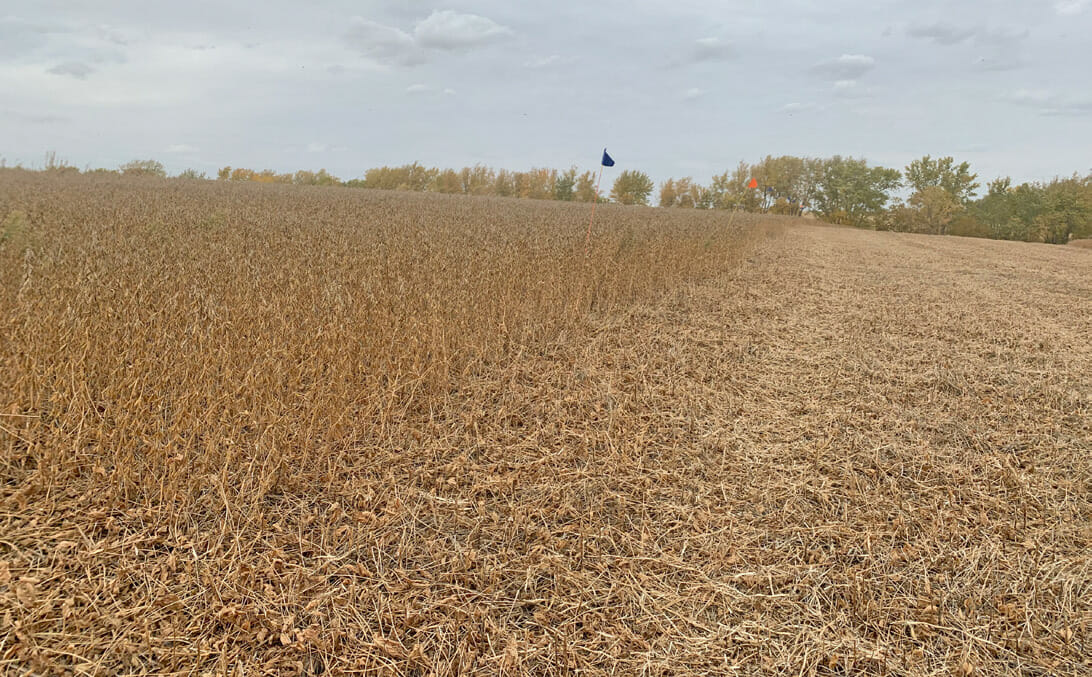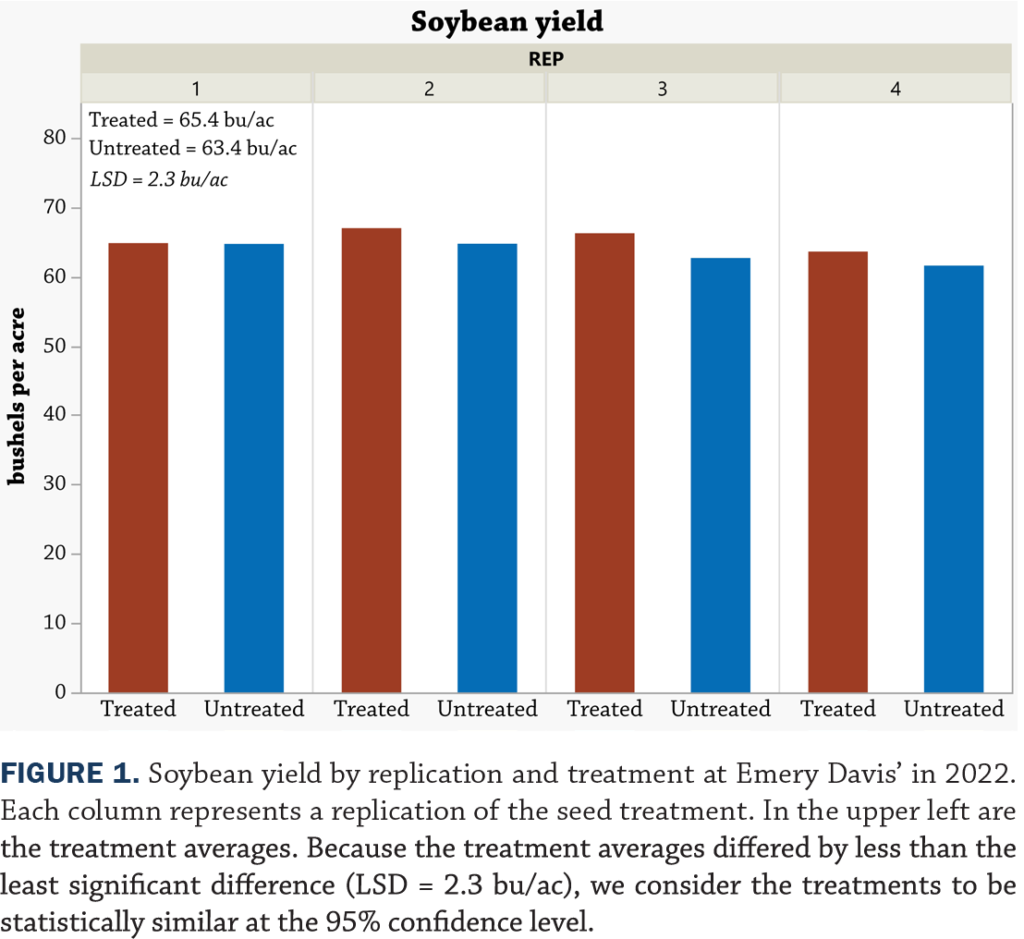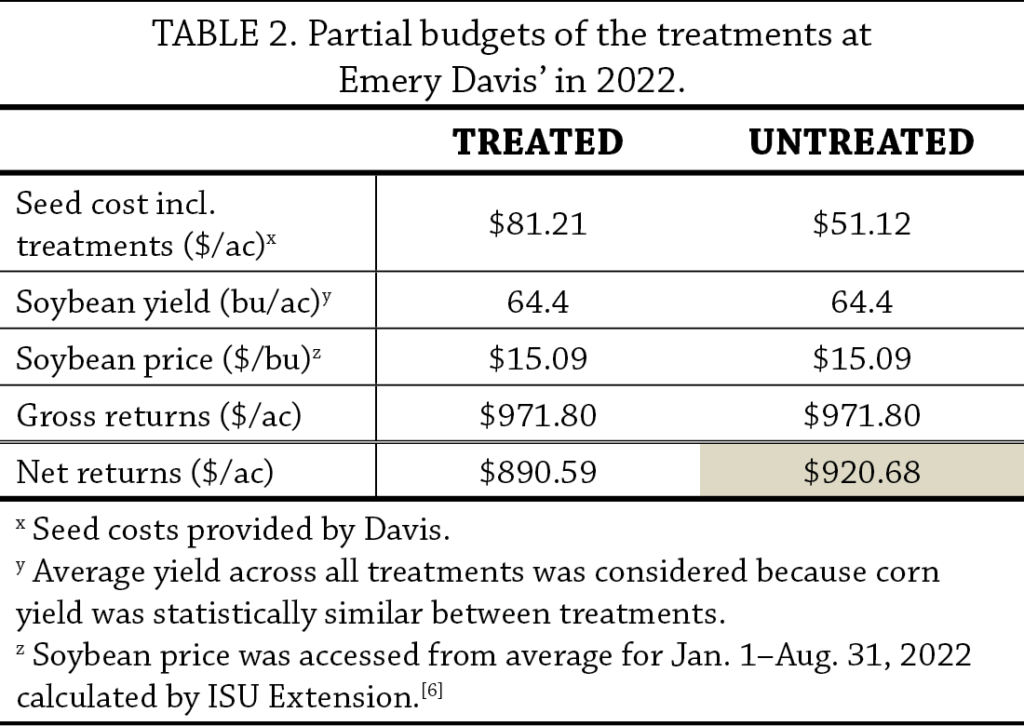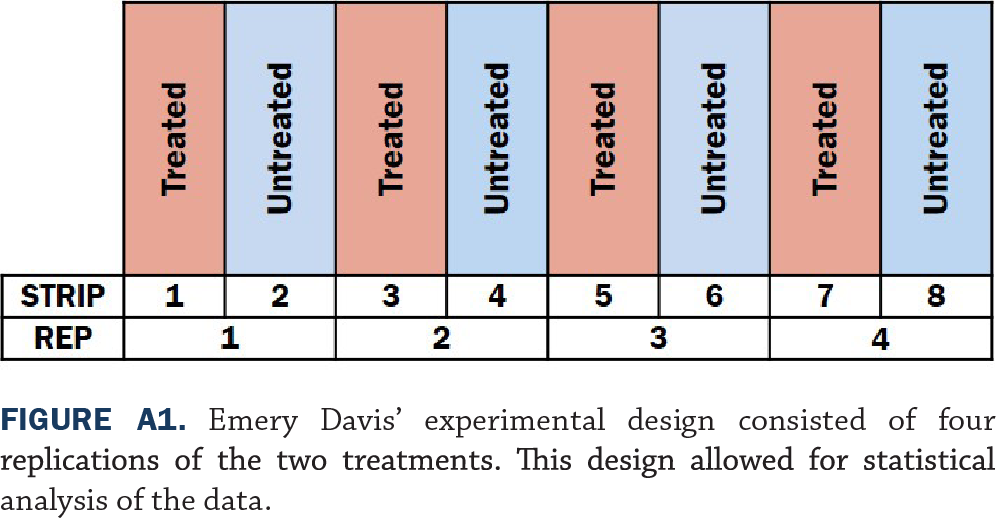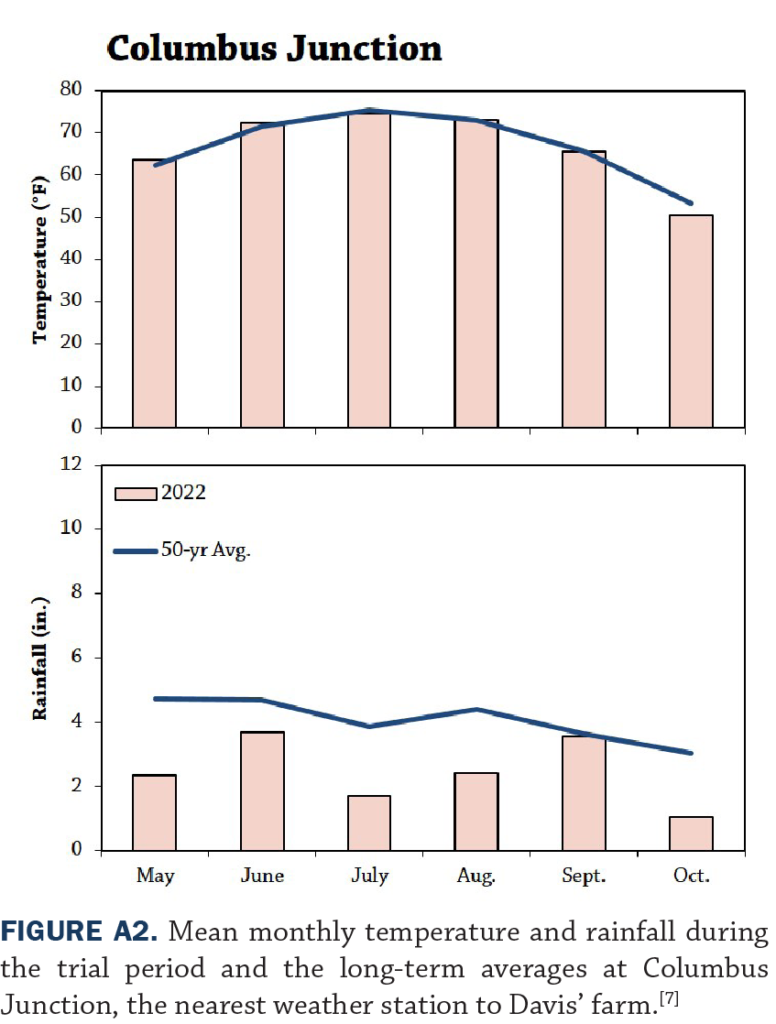In a Nutshell:
- Emery Davis wanted help with making a decision on whether or not to purchase soybeans with seed treatments in the future.
- He compared soybeans grown from seed treated with fungicides and a neonicotinoid with soybeans grown from untreated seed.
Key Findings:
- Soybean yields between treatments were statistically similar. Untreated soybean seeds produced yields equal to treated soybean seeds.
- Because the untreated soybeans were less expensive than the treated soybeans and the two resulted in statistically similar yields, untreated soybeans improved net returns by $30/ac.
Background
Since 2014, PFI cooperators have conducted 11 trials on soybean seed treatments.[1–4] In all instances, the cooperators found no improvement in soybean yield from treated seed compared with untreated seed. Consequently, they scored improved net returns from untreated seed. Learning of these results, Emery Davis wished to put his farm to the test and conducted a trial to determine whether an insecticide+fungicide seed treatment affected soybean yield and profitability compared with no seed treatment.
Methods
Design
To determine the value of seed treatments, Davis compared yields of soybeans between the following treatments:
- Treated – soybean seed treated with fungicides (Lumisena, EverGol Energy, ILeVo), a biofungicide (L2030G) and neonicotinoid insecticide (Gaucho).
- Untreated – soybean seed with no seed treatments.
Following corn harvest in fall 2021, Davis drilled a cereal rye cover crop and then planted soybeans and roll-crimped the cover crop in spring 2022. He assigned treatments to alternating strips of soybeans, then replicated each treatment four times (Figure A1). Strips measured 40 ft wide by 1,200 ft long. For both treatments, Davis planted the same soybean variety and planting population. Field management is presented in Table 1.
Measurements
Davis harvested soybeans from each strip and recorded yields and percent moisture on Oct. 14, 2022. Yields were adjusted to 13% moisture.
Data Analysis
To evaluate effects of the seed treatments on soybean yield we calculated treatment averages for each measurement then used a t-test to compute the least significant difference (LSDs) at the 95% confidence level. The difference between each treatment’s average soybean yield is compared with the LSD. A difference greater than or equal to the LSD indicates the presence of a statistically significant treatment effect, meaning one treatment outperformed the other and the farmer can expect the same results to occur 95 out of 100 times under the same conditions. A difference smaller than the LSD indicates the difference is not statistically significant and the treatment had no effect. We could make these statistical calculations because Davis’ experimental design involved replication of the treatments (Figure A1).
Results and Discussion
Soybean yields were statistically similar between the treatments (Figure 1). In other words, the untreated soybean seeds produced yields equal to the seeds treated with fungicides and a neonicotinoid insecticide. Across all treatments, the average yield was 64.4 bu/ac which is above the five-year average for Louisa County (56.2 bu/ac) where Davis farms.[5]
Economic considerations
The untreated soybean seeds provided top net returns by $30/ac (Table 2). The untreated soybeans were less expensive than the treated soybeans and the two resulted in statistically similar yields (Figure 1).
Conclusions and Next Steps
Davis’ results provide additional evidence that seed treatments may not always be necessary for soybeans. Like the PFI cooperators who researched this topic on their own farms before him, Davis found no benefit to net returns from growing soybeans from treated seed compared with untreated seed (Figure 1; Table 2). “Seed treatments don’t seem to pay for themselves let alone make the farm more profitable,” Davis said of his results. He added that the trial provided him usable data that will help him with decision-making going forward. “I think it’s good to actually test a product. Knowing that [seed treatments didn’t improve net returns] and the exposure risk of seed treatments I’ll stick to planting untreated seed.”
Appendix – Trial Design and Weather Conditions
References
- Gailans, S., D. Sloan, B. Lynch and W.& D. Johnson. 2014. Are neonicotinoid seed treatments in soybean production worth it? Practical Farmers of Iowa Cooperators’ Program. https://practicalfarmers.org/research/are-neonicotinoid-seed-treatments-in-soybean-production-worth-it/ (accessed October 2022).
- Gailans, S., D. Sloan, B. Lynch and W.& D. Johnson. 2015. Are neonicotinoid seed treatments in soybean production worth it? 2015 Update. Practical Farmers of Iowa Cooperators’ Program. https://practicalfarmers.org/research/5195/ (accessed October 2022).
- Nelson, H. and D. Sloan. 2021. Are Neonic + Fungicide Soybean Seed Treatments Justified? Practical Farmers of Iowa Cooperators’ Program. https://practicalfarmers.org/research/are-neonic-fungicide-soybean-seed-treatments-justified/ (accessed October 2022).
- Nelson, H., A. Amundson, S. Bennett and S. Saltzman. 2021. Are Soybean Seed Treatments Justified ? Practical Farmers of Iowa Cooperators’ Program. https://practicalfarmers.org/research/are-soybean-seed-treatments-justified/ (accessed October 2022).
- US Department of Agriculture-National Agricultural Statistics Service. Quick stats. USDA-National Agricultural Statistics Service. https://quickstats.nass.usda.gov/ (accessed October 2022).
- Johanns, A. 2022. Iowa Cash Corn and Soybean Prices. A2-11. Iowa State University Extension and Outreach. https://www.extension.iastate.edu/agdm/crops/pdf/a2-11.pdf (accessed October 2022).
- Iowa Environmental Mesonet. 2022. Climodat Reports. Iowa State University. http://mesonet.agron.iastate.edu/climodat/ (accessed October 2022).


